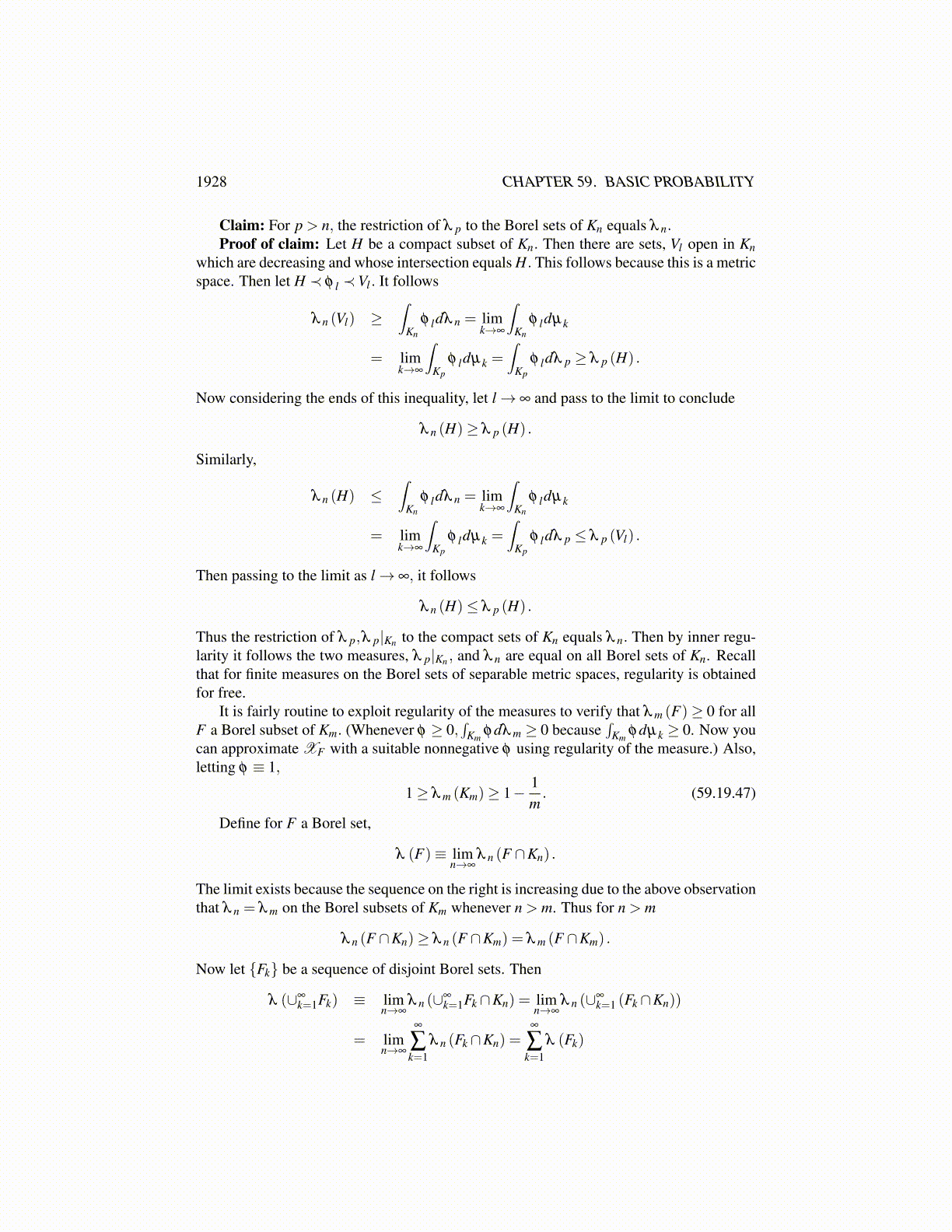
1928 CHAPTER 59. BASIC PROBABILITY
and so, considered as elements of S∗,
F−1 (µ) = φ µ (·)(2π)−(p/2) ∈ L∞.
By the dominated convergence theorem
(2π)p/2 F−1 (µn)(ψ) ≡∫Rp
φ µn(t)ψ (t)dt
→∫Rp
φ µ (t)ψ (t)dt
= (2π)p/2 F−1 (µ)(ψ)
whenever ψ ∈S. Thus
µn (ψ) = FF−1µn (ψ)≡ F−1
µn (Fψ)→ F−1µ (Fψ)
≡ F−1Fµ (ψ) = µ (ψ).
The version of Lemma 59.18.4 is the following.
Lemma 59.19.4 If φ µn(t)→ φ µ (t) where {µn} and µ are probability measures defined
on the Borel sets of Rp, then if ψ is any bounded uniformly continuous function,
limn→∞
∫Rp
ψdµn =∫Rp
ψdµ.
Proof: Let ε > 0 be given, let ψ be a bounded function in C∞ (Rp). Now let η ∈C∞
c (Qr) where Qr ≡ [−r,r]p satisfy the additional requirement that η = 1 on Qr/2 andη (x) ∈ [0,1] for all x. By Lemma 59.19.2 the set, {µn}
∞
n=1 , is tight and so if ε > 0 isgiven, there exists r sufficiently large such that for all n,∫
[x/∈Qr/2]|1−η | |ψ|dµn <
ε
3,
and ∫[x/∈Qr/2]
|1−η | |ψ|dµ <ε
3.
Thus, ∣∣∣∣∫Rpψdµn−
∫Rp
ψdµ
∣∣∣∣≤ ∣∣∣∣∫Rpψdµn−
∫Rp
ψηdµn
∣∣∣∣+∣∣∣∣∫Rpψηdµn−
∫Rp
ψηdµ
∣∣∣∣+ ∣∣∣∣∫Rpψηdµ−
∫Rp
ψdµ
∣∣∣∣≤ 2ε
3+
∣∣∣∣∫Rpψηdµn−
∫Rp
ψηdµ
∣∣∣∣< ε
whenever n is large enough by Lemma 59.19.3 because ψη ∈ S. This establishes theconclusion of the lemma in the case where ψ is also infinitely differentiable. To considerthe general case, let ψ only be uniformly continuous and let ψk = ψ ∗ φ k where φ k is a